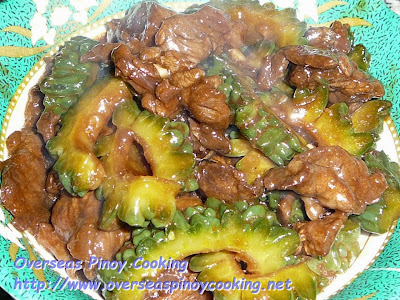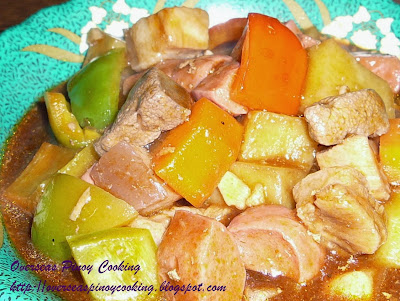Beef and Ampalaya With Oysters Sauce

Beef and Ampalaya with Oysters Sauce , this is another popular restaurant dish. Another version is also found at carenderias it is called ampalaya con carne. The carenderia version it sautéed in soy sauce or with the addition of tausi or permented black beans. But most restaurant, Chinese restaurants in particular it’s stir fried with oyster sauce. I have been cooking this on several occasions, it’s a good alternative way of cooking your beef, see also my previous post of beef and broccoli in oyster sauce . Ingredients: 1 kilo lean beef, thinly sliced into strips 2 large size, ampalaya , split in halve de-seaded, sliced crosswise 1 medium onion, chopped 1/2 head garlic, minced 1/4 cup soy sauce 1/2 cup oyster sauce 1/4 cup cornstarch 1/2-1 tsp. sugar salt and pepper cooking oil Cooking procedure: Marinate beef in soy sauce, cornstarch and a dash of salt and pepper for 10 to 15 minutes. In a wok, heat cooking oil and stir fry beef in batches until color change t...












